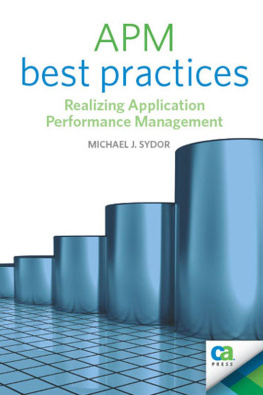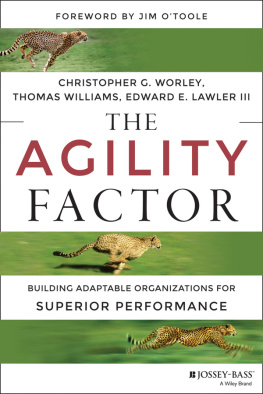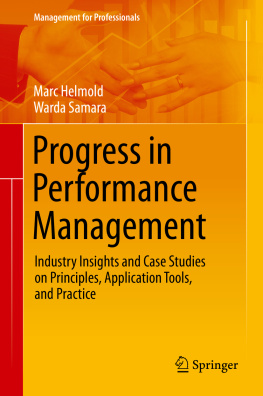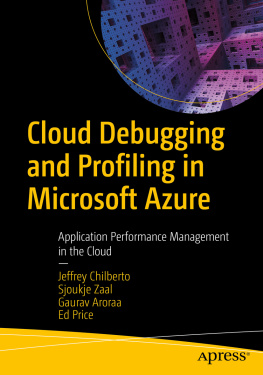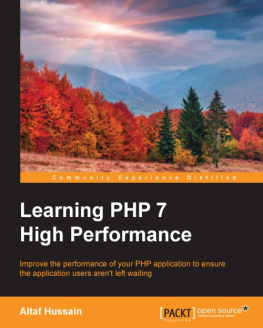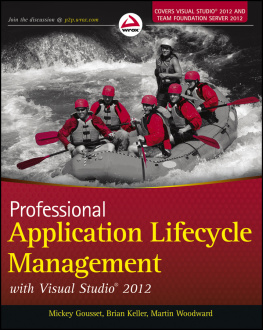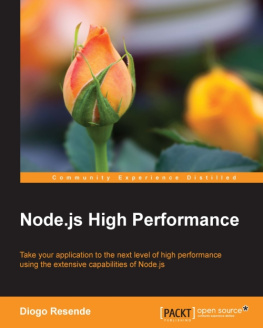APM Best Practices: Realizing Application Performance Managment
Copyright 2010 by CA Technologies. All rights reserved. All trademarks, trade names, service marks and logos referenced herein belong to their respective companies.
The information in this publication could include typographical errors or technical inaccuracies, and the authors assume no responsibility for its accuracy or completeness. The statements and opinions expressed in this book are those of the authors and are not necessarily those of CA Technologies. (CA). CA may make modifications to any CA product, software program, method or procedure described in this publication at any time without notice.
Any reference in this publication to third-party products and websites is provided for convenience only and shall not serve as the authors' endorsement of such products or websites. Your use of such products, websites, any information regarding such products or any materials provided with such products or on such websites shall be at your own risk.
To the extent permitted by applicable law, the content of this book is provided AS IS without warranty of any kind, including, without limitation, any implied warranties of merchantability, fitness for a particular purpose, or non-infringement. In no event will the authors or CA be liable for any loss or damage, direct or indirect, arising from or related to the use of this book, including, without limitation, lost profits, lost investment, business interruption, goodwill or lost data, even if expressly advised in advance of the possibility of such damages. Neither the content of this book nor any software product referenced herein serves as a substitute for your compliance with any laws (including but not limited to any act, statute, regulation, rule, directive, standard, policy, administrative order, executive order, and so on (collectively, Laws) referenced herein or otherwise. You should consult with competent legal counsel regarding any such Laws.
All rights reserved. No part of this work may be reproduced or transmitted in any form or by any means, electronic or mechanical, including photocopying, recording, or by any information storage or retrieval system, without the prior written permission of the copyright owner and the publisher.
ISBN-13 (pbk): 978-1-4302-3141-7
ISBN-13 (electronic): 978-1-4302-3142-4
Printed and bound in the United States of America (POD)
Trademarked names may appear in this book. Rather than use a trademark symbol with every occurrence of a trademarked name, we use the names only in an editorial fashion and to the benefit of the trademark owner, with no intention of infringement of the trademark.
President and Publisher: Paul Manning
Lead Editor: Jeffrey Pepper
Editorial Board: Steve Anglin, Mark Beckner, Ewan Buckingham, Gary Cornell, Jonathan Gennick, Jonathan Hassell, Michelle Lowman, James Markham, Matthew Moodie, Duncan Parkes, Jeffrey Pepper, Frank Pohlmann, Douglas Pundick, Ben Renow-Clarke, Dominic Shakeshaft, Matt Wade, Tom Welsh
Coordinating Editor: Laurin Becker
Copy Editor: Mary Behr
Compositor: Mary Sudul
Indexer: BIM Indexing & Proofreading Services
Artist: April Milne
Cover Designer: Anna Ishchenko
.
For information on translations, please e-mail .
Apress and friends of ED books may be purchased in bulk for academic, corporate, or promotional use. eBook versions and licenses are also available for most titles. For more information, reference our Special Bulk SaleseBook Licensing web page at http://www.apress.com/info/bulksales.
The information in this book is distributed on an as is basis, without warranty. Although every precaution has been taken in the preparation of this work, neither the author(s) nor Apress shall have any liability to any person or entity with respect to any loss or damage caused or alleged to be caused directly or indirectly by the information contained in this work.
Contents
About the Author
 | Michael J. Sydor is a software solution architect who has invested 20 years in the mastery of high performance computing technology. He has significant experience identifying and documenting technology best practices and has designed programs to mentor and realize client performance management teams. With a broad combination of software and systems architecture experience, as well as critical situation and traditional performance analysis, Michael is well positioned to influence and guide major initiatives within client IT organizations, for both distributed and mainframe architectures, and across Telco, Cable, Financial Trading, Media, Banking, Insurance, and Utilities industries. |
Acknowledgments
This book is possible only through the efforts and interests of a large number of people who have supported the project, contributed to this body of experience, or helped in the refinement of the message. There are three teams:
Team AMy wife Jill and daughter Natasha, who had to endure my constant distraction and long hours devoted to this project over a very difficult year. Their support and patience helped keep it going.
Team BThe collaborators: Karen Sleeth (CA Press) and Jeff Cobb at CA. Jeffrey Pepper (editor) and Lauren Becker at Apress, along with the Apress production team. This is my first book. I needed a lot of help. These folks helped get it done right.
Team CThe extended team who bring APM to the marketplace: sales, technical and management.
A number of sales people directly contributed to this project by getting me in front of the real problems in the industry, primarily Ron Berkovits, who had (and maintains) a great enthusiasm for the best practices approach. Kristine Chamberline commissioned the first discussion paper introducing the best practice value proposition which lead to the vendor-neutral, Center of Excellence program. Kristine also committed Ron, Sam Terrell and Fran Rempusheski to the initial rollout of the sales-facing side of this story to further refine business propositions.
I am of course indebted to my direct and executive management who have kept me entertained, challenged and employed. This includes Mike Measel, Tom Bertrand, Kenton Siekman and Chris Cook. Chris has been guiding the APM business for many years, effectively commissioned this book, and made sure it survived the nuances of the business. It is exceptionally rare to be able to talk about what really leads to customer success and see it through.
In order to reach this current level of technical maturity I needed to draw from many other practitioners including Dave Martin, Ki Allam, Jason Collins, Mark Addleman, Mike Measel, Carl Seglum, Don Darwin, Haroon Ahmed, Andreas Reiss, Gil Rice, Paul Jasek, Sylvain Gilbassier, David Barnes, Omar Ocampo, Mike Risser, Ben Tan, Tom Krupta, Shubra Kar, Matt LeRay, Prabhjot Singh, and Hal German. All of these folks contributed experiences, often beyond my own skills, and frequent cross-fertilization of ideas as the best practices were established and refined.
These varied experiences would not have been possible without the seasoned guidance of Dick Williams, who shepherded Wily Technology from startup to acquired company. Dick was a great inspiration who helped deliver some of the earliest APM messages as we all helped the marketplace mature. None of which was possible without a solid, capable product by Lew Cerne, Jeff Cobb, John Bley and many others. Their innovations made it possible for the extended team to focus on how to employ the tool, rather than being distracted with how to get it functioning. It just worked.

